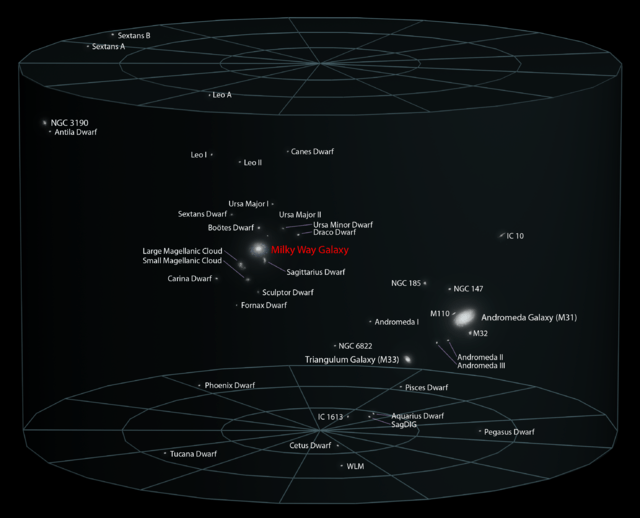

We have long known that galaxies are rarely isolated or alone. Rather, they have a natural tendency to collect into groups, called galaxy clusters. Despite the fact that our closest large neighbor, the Andromeda Galaxy, is 1.5 million light-years away, the Milky Way belongs to one of these groups, referred to as the local group.
Astronomers are just now creating an accurate map of our sliver of the universe, and now, that picture is a little more complete. This comes after researchers, led by Prof Igor Karachentsev of the Special Astrophysical Observatory, have announced the addition of a previously-unknown galaxy to our local group, bringing the grand total to 55.
The galaxy in question can be found about 7 million light-years from Earth in the constellation of Hydrus. Called Kks3, it’s an isolated dwarf spheroidal galaxy (dSph) with miniscule mass (it’s believed to have only one ten-thousandth of the mass our own galaxy boasts).
In order to make the discovery, researchers used Hubble’s Advanced Camera for Surveys (ACS), which found evidence of the unassuming galaxy back in August. It wasn’t overtly clear before, given the fact that it has none of the pizazz of spirals or ellipticals, and it lacks the material it needs to forge new stars. Therefore, we only have older (and more obscure) generations of stars to work with, further impeding our search.
As the team also notes, “The absence of clouds of hydrogen gas in nebulae also makes them harder to pick out in surveys, so scientists instead try to find them by picking out individual stars.”

It’s believed that small galaxies like this lose most of their star-powering juice to larger companions. However, with an isolated galaxy like Kks3, we have to look into alternative methods of depletion. The team suggests that Kks3 simply used up almost all of its material early on, and it was never replenished.
Team member Prof Dimitry Makarov, also from the Special Astrophysical Observatory, comments: “Finding objects like Kks3 is painstaking work, even with observatories like the Hubble Space Telescope. But with persistence, we’re slowly building up a map of our local neighbourhood, which turns out to be less empty than we thought. It may be that are a huge number of dwarf spheroidal galaxies out there, something that would have profound consequences for our ideas about the evolution of the cosmos.”
In addition to Kks3, this team has discovered just one other isolated dwarf spheroidal galaxy hanging out in the vicinity of our local group (called KKR 25, it was found back in 1999), but the number may rise when next-generation telescopes, like James Webb, go online.
You can see the full press release here.